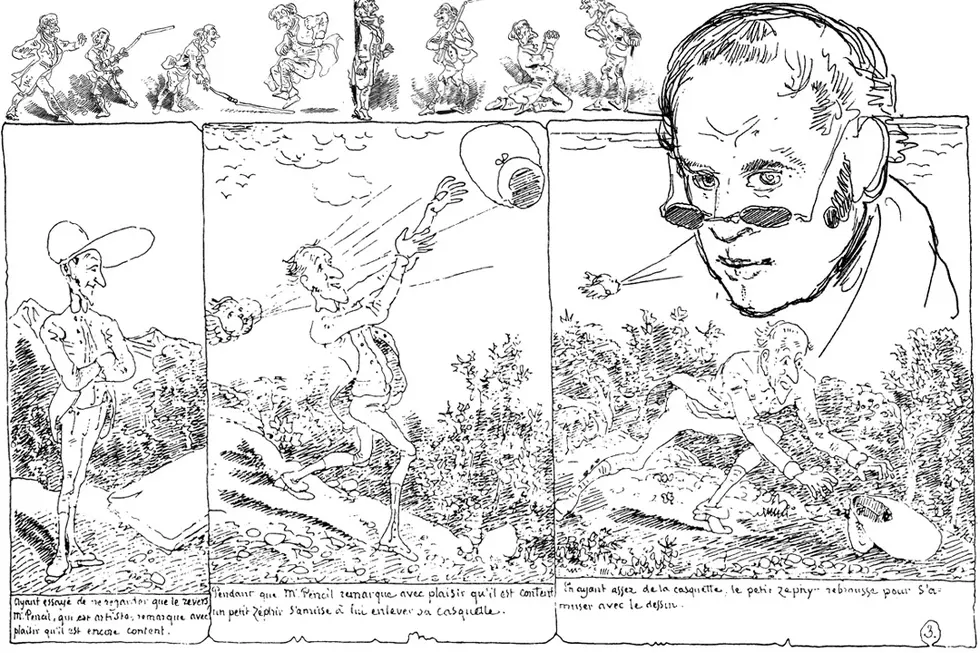
Telling Her Story: A Celebration Of Marjane Satrapi
Born November 22, 1969, Marjane Satrapi is a multitalented artist --- a writer, graphic novelist, and filmmaker --- but she is best known for her renowned autobiographical graphic novels exploring life after the Iranian Revolution. Her work is centered on her family, but explores greater themes in the relationship between the East and the West.
Satrapi was born in Rasht, Iran, but grew up in Tehran, attending the prestigious Lycée Francais. She was still a child when the Iranian government was overthrown and replaced with an Islamic republic under Ayatollah Khomeini. The relatively pro-Western government was replaced with an anti-Western theocracy, with a new constitution.
Things got worse when Iraq invaded Iran, starting the Iran-Iraq war. Satrapi’s parents sent her to Vienna when she was 14 to escape the war and the oppressive regime. She returned to Iran at 18 to study visual communication in Tehran.
At 24, Satrapi left Iran and an unhappy marriage to move to Strasbourg, where she again studied art. From there she moved to Paris and befriended members of the Atelier des Vosges, a studio full of comic artists, who introduced her to the work of graphic novelists such as Art Spiegelman. Satrapi realized she could use the visual medium of comics to tell the story of Iran --- her Iran, the real Iran --- which many people in the Western world were misinformed about.
Like Spiegelman’s Maus, Satrapi’s first graphic novel Persepolis is focused on the experiences of her family during oppressive, traumatic regimes. Persepolis is told from the perspective of Satrapi as a child, when Iran instituted many changes as a result of the Revolution. Secular education was abolished, gender segregation occurred, women and girls were required to wear the veil --- especially foreign to Satrapi, whose family was secular and Marxist.
Persepolis portrays the time both before and after the Revolution, both of which contained much political turmoil and oppression. Satrapi shows the reasons why many in Iran wanted a revolution, but also the consequences of the revolution that occurred.
Persepolis follows Satrapi from ages 10-14, a trying enough time for a young person without societal upheaval and war. Satrapi becomes increasingly rebellious and political, wearing denim jackets and listening to illegal tapes with forbidden music. Her neighbours’ house gets bombed; her uncle is executed. Her parents, fearing for her safety, send her to Austria. Persepolis 2: The Story of a Return details Satrapi’s time in Austria and her return to Tehran at 18.
Both Persepolis and Persepolis 2 were incredibly well received and earned several awards, including the Angoulême Coup de Coeur, the Prix du Lion from the Belgian Center for Comic Strips, and the Prix France Info.
Satrapi’s next graphic novels continued to tell her family’s story. Embroideries focuses on her grandmother and other Iranian women, talking about sex and love and men. It’s a hilarious, frank look at the private lives of women. Chicken with Plums tells the story of Satrapi’s great uncle, a renowned musician, who discovers his prized instrument is damaged and no longer usable. He decides life is no longer worth living and takes to his bed. Chicken with Plums investigates the story of his life within this context.
Persepolis and Chicken with Plums were both made into films, co-written and co-directed by Satrapi, with Vincent Paronnaud. Persepolis was nominated for an Academy Award for best animated feature.
Satrapi continues to write and direct. She produced two more graphic works, Monsters are Afraid of the Moon and The Sigh, this time for children and young adults respectively. She also directed the live action movies Gang of the Jotas and The Voices.
Persepolis has been challenged for its inclusion in library collections and schools, making the American Library Association’s list of the ten most frequently challenged books in 2014. Satrapi’s work remains an important look at freedom and family, and one of the most important graphic novels ever written.
More From ComicsAlliance









